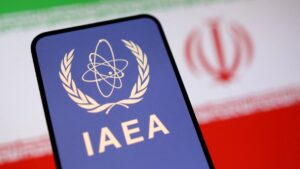The year 2025 marks a period during which liquefied natural gas (LNG) supply is expected to continue growing in a controlled manner, while demand fluctuates due to regional factors. Persistently high prices and ongoing geopolitical tensions are making energy security policies increasingly complex. The International Energy Agency’s (IEA) Q3 2025 Natural Gas Market Report shows that the global LNG market’s supply-demand dynamics are evolving and are directly influenced by geopolitical developments.
According to the report, in the first half of 2025, LNG supply recorded limited yet steady growth, while demand took diverging paths, particularly across Europe and Asia. As Russian gas volumes declined, Europe rapidly increased its LNG imports, which rose by 25% compared to the same period in the previous year, reaching a monthly average of 15 billion cubic meters between January and June 2025. This increase raised LNG’s share in Europe’s total gas supply to 35%. Countries like Germany, the Netherlands and Italy have intensified their purchases from the spot market to secure storage levels ahead of the critical winter season.
Global LNG supply capacity is expected to grow rapidly over the coming years, with an additional 200 million tons projected to be added by 2030. This amount equals nearly half of the current annual LNG trade volume. The United States continues to lead in new infrastructure investments, and the influence of U.S.-sourced LNG in Europe extends beyond increasing supply; it also plays a defining role in long-term contract pricing.
Contrary to common belief, Europe still relies more heavily on long-term contracts than on spot purchases. According to 2023 data, while the TTF index dominated spot contracts with a 64% share, long-term contracts were primarily indexed to U.S. Henry Hub and Brent crude oil. This diversity reflects the EU’s attempt to establish a more complex yet resilient pricing structure in response to geopolitical and economic risks. The current European LNG infrastructure is heavily concentrated in coastal countries, such as France, the Netherlands, Belgium, and Spain. This concentration increases redistribution costs for landlocked Central European countries and adds further pressure on existing infrastructure.
Türkiye as energy hub
In this context, Türkiye’s ambition to become an energy hub emerges as a solution not only at the national level but also regionally. As of 2025, Türkiye’s total natural gas entry capacity, including pipelines and LNG terminals, has exceeded 160 billion cubic meters. Since global LNG supply remains limited in 2025, prices are on an upward trajectory amid ongoing competition with Asia. Türkiye faces cost pressures in LNG imports under these conditions, yet maintains supply security thanks to its multisourced supply strategy.
Growing dependence on Brent- and Henry Hub-indexed LNG contracts exposes Türkiye to major market fluctuations. Geopolitical tensions and speculative movements in global commodity markets often lead to sudden and unpredictable volatility in these price benchmarks. At times, Henry Hub prices diverge from global LNG spot prices, especially when demand in Asia increases or supply tightens in the U.S. This divergence makes it difficult for contract prices to accurately reflect actual market conditions, reducing cost efficiency for importers such as Türkiye. Although Brent-indexed contracts offer a degree of predictability, they tend to react more slowly to shifts in the supply-demand balance of the LNG market, creating a misalignment between contract prices and spot prices. This limits Türkiye’s pricing flexibility and places considerable strain on its energy budget, particularly during periods of currency volatility or seasonal demand peaks. To mitigate these risks, diversifying Türkiye’s LNG procurement portfolio in terms of both contract types and pricing indices is both technically feasible and strategically necessary.
Evaluating regional price indices, such as the European Title Transfer Facility (TTF) or the Asia-based Japan-Korea Marker (JKM), as alternatives to Brent and Henry Hub-based contracts could help distribute price volatility more evenly across markets. This transition would involve restructuring pricing formulas through buyer-seller negotiations and is achievable given Türkiye’s strong bargaining position. Additionally, striking a balance between long-term contracts and flexibly designed spot purchases is essential for optimizing the portfolio. Türkiye’s LNG infrastructure, including the Marmara Ereğlisi, Egegaz and Ertuğrul Gazi FSRU facilities, is technically capable of supporting such flexibility. With this infrastructure, Türkiye can maintain supply diversity while procuring spot LNG under favorable market conditions, thereby offsetting the cost pressures of off-contract volumes.
By 2025, Türkiye’s natural gas exchange platform, operated by Energy Exchange Istanbul (EXIST), is expected to become more prominent in regional gas trade, and in some cases, price differences between the European and Turkish gas markets may create arbitrage opportunities. These developments are enabling Türkiye to emerge as a price influencer, even if not yet a price setter. For EU countries without direct access to LNG imports, Türkiye’s LNG terminals and its newly forming spot market provide added flexibility. The commissioning of the Saros FSRU terminal in 2025 has reinforced Türkiye’s role as a regional hub in short-term LNG trade. In this context, countries such as Austria and Hungary are exploring deeper energy cooperation through interconnections with Greece, Türkiye and Bulgaria.
Europe’s energy transformation
The $250 billion energy deal signed between the EU and the U.S. has attracted significant attention. The agreement marks a key turning point in the geopolitical trajectory of global energy trade. At the heart of the deal lies LNG supply, which has the potential not only to enhance supply security but also to reshape Europe’s energy pricing mechanisms and strategic orientation. However, the agreement’s heavy reliance on long-term LNG contracts indexed to Brent and Henry Hub also introduces substantial structural risks alongside new opportunities. LNG contracts based on Brent and Henry Hub indices create a dual vulnerability for European energy markets. These pricing mechanisms do not always reflect real-time global supply-demand dynamics and may result in discrepancies between the actual shipping costs of U.S. LNG and market prices.
Contracts indexed to the Henry Hub weaken cost efficiency for Europe and place importers under significant margin pressure. Despite these structural risks, the EU plans to achieve its $750 billion energy trade target within the next three years. Reaching this goal will require more than political will or purchase guarantees. Infrastructure development, regulatory reforms and contract diversification must also support it. In this regard, rapidly increasing LNG import terminal capacity, commissioning floating storage and regasification units (FSRUs) and strengthening intra-European interconnection capacities have become top priorities. Countries like Germany, Italy and Poland are accelerating this transformation through new LNG terminal investments, thus reinforcing physical supply security and enhancing market diversity.
However, supply-side solutions alone will not be sufficient for the EU to meet this goal. On the demand side, enhancing energy efficiency policies, developing demand management systems supported by digital technologies and increasing strategic gas storage capacity will be critical complementary measures to bolster energy security. At the same time, the legal and environmental framework for transatlantic energy trade must not be overlooked. In particular, the EU’s implementation of the Carbon Border Adjustment Mechanism (CBAM) could create new technical and diplomatic challenges if misalignments arise between the carbon intensity of U.S. LNG imports and EU climate policies. This would open a new field of negotiation in the evolving landscape of global energy trade.




















































Be First to Comment